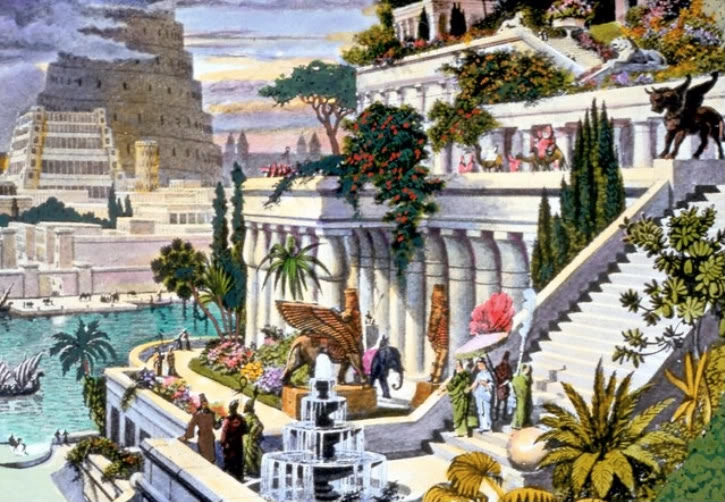
Throughout history, cultures have imagined paradise as an idealized realm where the righteous find eternal happiness. These ancient paradises reflect each society’s values, beliefs, and hopes.
Exploring these concepts reveals a shared human desire for a perfect afterlife, though the details vary significantly.
The origins of paradise
The term “paradise” has an ancient origin. The word comes from the Persian pairidaeza, which referred to a walled garden. This idea of a secluded, idyllic space influenced various religious and cultural concepts of an afterlife.
For example, in Herodotus’ “Histories,” Persian paradises appear as royal parks or hunting grounds. Kings cherished these places as symbols of power and divine favor.
Herodotus writes, “In every city, they have a particular park or paradise…..these parks weren’t just beautiful. Persian boys learned essential skills like riding and shooting there.”
Similarly, the Septuagint, the Greek translation of the Hebrew Bible, used the term paradeisos to describe the Garden of Eden. This connection between the Persian concept and later Judeo-Christian visions of a perfect, divine garden is significant.
Ancient Paradise in Persia, Mesopotamia

The Persian concept of Ferdous evolved into an idea of a heavenly garden in Islamic tradition. Originally, Ferdous referred to a walled garden, much like the pairidaeza.
In Avestan texts, it symbolized a divine reward, an idealized space of peace and prosperity. The Qur’an briefly mentions Ferdous as one of the highest levels of Jannah, described as “gardens of perpetual residence; beneath them, rivers flow.”
Over time, Ferdous became a central image of Paradise. Persian gardens on earth mirrored this concept. For example, the Garden of Cyrus evoked the imagery of the divine garden, complete with flowing rivers and lush vegetation.
These earthly paradises served as physical reminders of the spiritual paradise that awaited the faithful.
Greece: Olympus and Elysian fields as an ancient paradise

In ancient Greece, the idea of paradise took on a different form. The Greeks envisioned the Elysian Fields as the final resting place for heroes and the virtuous. They described these fields as a land of perpetual spring, where the dead lived in eternal happiness.
In his Odyssey, Homer mentions the Elysian Fields as a place where Menelaus, due to his marriage to Helen, would go instead of dying a mortal’s death.
Paradise offered freedom from toil, harsh weather, and suffering, reflecting the Greek ideal of a perfect life. Similarly, Pindar’s “Olympian Odes” describes the Elysian Fields as a realm of pure pleasure and peace.
He describes it as a place “where heroes receive their just rewards, filled with blooming flowers.” The belief in such a place is evident in Greek funerary art, where artists often depict scenes of heroes in a paradisiacal landscape.
These visual representations reinforced the cultural belief in a blessed afterlife for the worthy.
Nordic: Valhalla and the warrior’s paradise

In Norse mythology, paradise wasn’t a peaceful garden but a grand hall known as Valhalla. Here, warriors chosen by Odin would live after death. Valhalla was no ordinary hall.
It was enormous, with 540 doors, through which 800 warriors could exit at once to fight in the final battle of Ragnarök.
The warriors, known as Einherjar, spent their days battling and their nights feasting, reflecting the Norse ideal of a warrior’s life.
The “Poetic Edda” and “Prose Edda” provide detailed descriptions of Valhalla, emphasizing its role as a reward for those who died bravely in battle.
The “Poetic Edda” mentions, “Five hundred doors and forty there are, I ween, in Valhall’s walls.” Archaeological evidence, such as the elaborate Viking ship burials, supports the belief in Valhalla.
These burials, filled with weapons and armor, suggest that the dead were being prepared for an afterlife of eternal warfare and glory.
Commonalities and differences in ancient paradises

Although these cultures had different views of paradise, common themes emerge.
Whether in the gardens of Persia, the Elysian Fields of Greece, or the halls of Valhalla, the idea of a perfect afterlife reflects a universal desire for eternal happiness, peace, and reward.
Each culture’s values shaped these paradises. Persian paradises emphasized peace and beauty, Greek paradises highlighted eternal pleasure, and Norse paradises celebrated bravery and warfare.
Each culture demonstrates the transition from the earthly to the divine. Physical spaces like Persian gardens and Greek tombs were earthly reflections of a heavenly reality.
Different types of paradise across cultures and ancient Greece
Exploring different paradises across cultures reveals both the diversity and commonality of human aspirations. Through lush gardens, fields of eternal spring, or grand warrior halls, the idea of paradise offers insight into what each society valued most. These ancient visions continue to influence modern perceptions of the hereafter.



